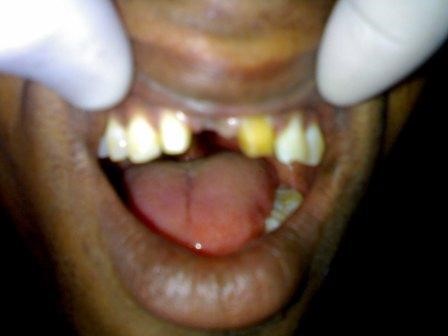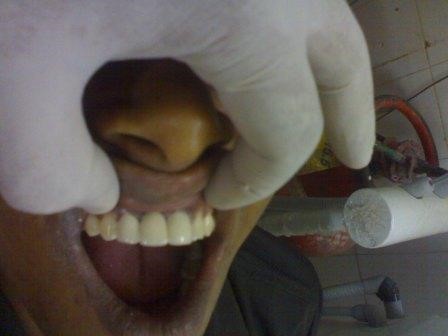
Crown
A crown is a tooth-shaped cover placed over a tooth that is badly damaged or decayed. A crown is made to look like your tooth. Many people call it as a cap.
Crowns may be placed for several reasons. Usually, the tooth has been broken or damaged a great deal by decay. As a result, a filling can’t replace enough of the tooth or make the tooth strong enough. A crown may hold together parts of a cracked tooth. It also can be used to hold a bridge in place. Crowns can be used to improve appearance as well. They may be placed to cover misshapen or badly discoloured teeth.
Crowns can be made ahead of time (prefabricated) or made to order in a laboratory. Prefabricated crowns are made of plastic or stainless steel. They can be used on a temporary basis until a permanent crown is made.
Crowns can be all metal, porcelain fused to metal ( PFM ), or all ceramic(Zirconia) . Metals include gold alloy, other alloys ( palladium ) or a base-metal alloy ( nickel or chromium ). PFM and all-ceramic crowns are the same color as your natural teeth. They look just like normal teeth.
According to study , crowns usually last at least seven to ten years. In many cases they last much longer, up to 40 yrs
Before Treatment

After Treatment


Bridges
A missing tooth can detract from even the most beautiful smile. Our practice at Dental World can restore beauty to your smile with a bridge made of natural, tooth coloured materials. A dental bridge can fill the gap created by one or more missing teeth. A bridge uses two crowns on the teeth on either side of the gap and a false tooth/teeth (pontic) in between. These false teeth called pontic can be made from alloys, porcelain, gold or a combination of these materials. Dental bridges can be supported by your natural teeth or by implants.
Why Replace Missing Teeth?
Losing a tooth can be of social and psychological concern. Teeth are lost for a number of reasons including:
When a permanent tooth is lost, the neighbouring teeth are affected. Because the support and chewing forces are altered, the remaining teeth will begin to shift. The tooth above or below the one that was lost will begin to move up and out of its socket. This accelerates periodontal (gum) disease and causes further breakdown in the dental arch. If the missing tooth is not replaced, more teeth will eventually be lost, due to the improper forces exerted during chewing.
What is the procedure like?
Fitting and placement of dental bridges is a two-visit process. During the first visit, the abutment teeth or the teeth on either side of the missing tooth/teeth are prepared. The preparation may involve re-contouring these teeth to allow room for a crown to be placed over them. We make impressions of your teeth which serve as the model from which our dental lab will make your bridge. We will make a temporary bridge for you to wear until you get the permanent one fixed. During the second visit, we will remove your temporary bridge and cement the permanent bridge
Replacing Missing Teeth :
Before Treatment

After Treatment
